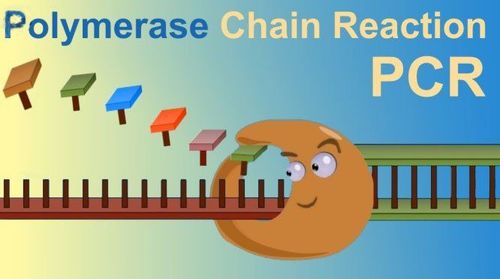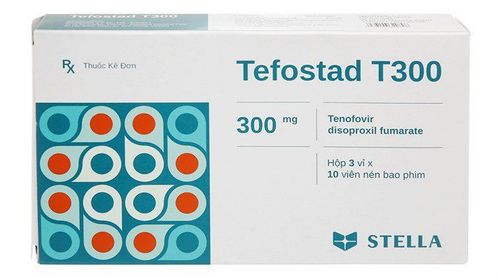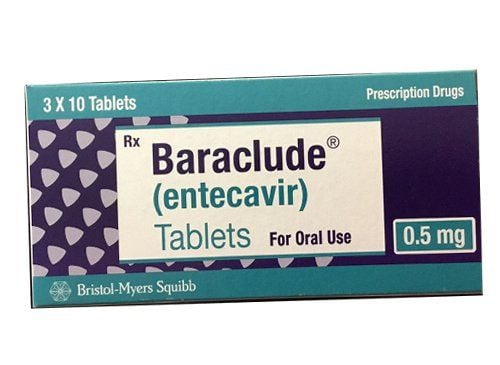This is an automatically translated article.
The results of the PCR test to measure the viral load of hepatitis B HBV-DNA are meaningful in order to accurately determine when to use antiviral drugs to treat hepatitis B.
1. Quantitative HBV-DNA PCR test
Quantitative PCR test of HBV-DNA is also known as measurement of hepatitis B virus load in blood - this is a modern testing technique for the purpose of accurately determining the amount and concentration of strains present in the blood. per unit of serum/plasma volume, applicable to units of IU/ml or copies/ml (where 1IU would be equivalent to 5-6 copies). From there, the doctor can assess how well the virus is multiplying in the liver cells. High viral load is when this number is above 10,000 IU/ml, average is around 2000 to 10,000 IU/ml, low is less than 2000 IU/ml.
Monitoring and checking the level of HBV-DNA in the blood periodically every month, and periodically every year is an important factor in managing the disease. Based on that determine the right time to treat and monitor the patient's response, after technical assessment as well as the time to stop treatment.

Xét nghiệm HBV-DNA bằng kỹ thuật PCR giúp đánh giá được hiệu quả điều trị virus viêm gan B
(1) No HBV-DNA is found in blood samples ( 2) HBV-DNA levels are below detection threshold (approximately 20 IU/ml) (3) Specific HBV-DNA levels are measured. Testing for HBV-DNA by PCR technique, also known as quantitative real-time HBV - PCR is one of many items that help us evaluate the effectiveness of hepatitis B virus treatment and consider whether to treat hepatitis B with drugs. anti virus not. For patients with hepatitis B who have been taking hepatitis B antivirals for about 1 to 3 months, and the viral load has decreased 100-fold, it can be considered as effective antivirals. When the ALT enzyme increases more than 2 times the value. normal or with confirmed evidence of advanced cirrhosis/cirrhosis regardless of ALT level. Cases occurring when measuring hepatitis B viral load by PCR method:
HBV-DNA ≥ 105 copies/ml (20,000 IU/ml) if HBeAg (+) HBV-DNA ≥ 104 copies/ml (2,000 IU/ml) ml) if HBeAg (-).
Trắc nghiệm: Làm thế nào để bảo vệ lá gan khỏe mạnh?
Làm test trắc nghiệm kiểm tra hiểu biết về gan có thể giúp bạn nhận thức rõ vai trò quan trọng của gan, từ đó có các biện pháp bảo vệ gan để phòng ngừa bệnh tật.2. Hepatitis B virus load measurement
For hepatitis B patients with high HBV-DNA count, if the disease continues to progress like this for a long time, the rate of complications into cirrhosis and liver cancer is relatively high.
Therefore, patients need to monitor some more liver function indicators, ultrasound results to assess their condition and have an accurate treatment plan, thereby reducing the danger of chronic hepatitis B. count.
Normally, the average value of HBV-DNA:
From 10^3 - 10^5 copies/ml of blood, the virus is in the weak replication stage From 10^5 to 10^7 copies/ml of blood, the virus is in the stage of relatively strong replication. From crossing the threshold of 10^7 copies/ml of blood, the virus is in a very strong replication stage. The higher the virus content in the blood of the patient, the greater the risk of liver damage as well as complications of cirrhosis and liver cancer. Besides, it is easier to infect others.
If measurement of HBV-DNA is high, liver function is abnormal, ultrasound results show liver damage, in addition, the patient has some additional symptoms such as fatigue, right upper quadrant pain , nausea ... means that the patient is in the stage of immune rejection (when the immune system fights and suppresses the virus). At this time, antiviral therapy combined with regenerative treatment and liver support is required. Because, at this time, the longer without treatment, the more the immune system destroys the cells infected with the hepatitis B virus, thereby making the cirrhosis process happen faster.
The results of the PCR test to measure the viral load of hepatitis B HBV-DNA are meaningful to determine exactly when to use antiviral drugs to treat hepatitis B.
During the whole process Treatment should be measured continuously and periodically in order to properly assess the effectiveness of treatment on the basis of variation in viral load per test. In case the viral load has tended to decrease, then increase sharply at the next test, there is a high risk that the hepatitis B virus strain has become drug-resistant. At that time, it is necessary to have a change in the treatment regimen to promptly respond to the common abnormalities of the patient.
3. How to take samples and preserve when measuring hepatitis B virus load by PCR
3.1. How to take a sample Plasma/serum with EDTA-resistant capacity: 4ml 3.2. Preservation Centrifugation conducts specimen collection from plasma/serum stored for 6 hours, after the time of specimen collection. Transfer plasma/serum to a sterile tube with a stopper and store in the freezer.
4. How to read PCR results to measure hepatitis B virus load

Đọc hiểu các chỉ số trong xét nghiệm định lượng virus viêm gan B là điều vô cùng cần thiết
Reading and understanding the indicators in the quantitative hepatitis B virus test is extremely necessary, not only to assess the severity of the disease but also to be a decisive factor in the treatment regimen. Among the test indicators, patients need to pay special attention to the following indicators:
HBV-DNA : Is the nucleus of the hepatitis B virus. HBV-DNA test is meaningful to see if the blood carries the virus completely. adjusted (including core and shell) or not. HBV-DNA reflects viral replication and indicates the number of viral particles present in the blood. HBsAg is the surface antigen of the HBV virus. To conclude whether or not you have hepatitis B depends on the HBsAg test. Because many people with chronic hepatitis B have low levels of HBV-DNA in their blood, even below the detection threshold, they still progress to cirrhosis and liver cancer. If HBsAg (+) means you have hepatitis B, if HBsAg (-) is not hepatitis B. HBeAg : is an endogenous antigen of the HBV virus, a protein secreted by HBV cells. The presence of this antigen (HBeAg (+)) indicates that you have high levels of the virus in your blood and are highly contagious. If HBeAg is negative (HBeAg (-)), then the virus level in the blood is low or the virus is in the dormant stage, not replicating and the risk of infecting others is low. Liver enzyme indicators: Like ALT, AST indicates the extent of liver damage caused by the virus. 4.1. Determining the case without medication When HBsAg (+) but HBeAg (-), hepatitis B virus HBV-DNA quantification is above 10^4 copies/ml, liver enzyme index ALT/AST is less than 40 UI/ml, ultrasonography. If the liver is not necrotic, then the virus is not active, so there is no need for drug treatment.
4.2. Identifying serious cases requiring drug treatment When testing for HBsAg surface antigen (+) and endogenous HBeAg antigen (+), hepatitis B virus HBV-DNA quantification above 10^5 copies/ml, enzymes liver increased more than 2 times normal, ultrasound showed liver necrosis, accompanied by clinical symptoms of fatigue, loss of appetite, yellowing of the skin and eyes, pain in the right lower quadrant... then this result indicates the virus. is multiplying and requires immediate medication. Medicines will be prescribed to best suit the level of disease and condition of the patient.
In addition, in the case of HBsAg (+), HBeAg (-), hepatitis B virus HBV-DNA quantification above 10^4 copies/ml although the virus is not active but liver enzymes are 2 times higher, there were clinical symptoms. ready to be treated according to the regimen prescribed by the doctor. This indicates that the patient has had chronic hepatitis B, the virus was active but then became inactive. In this case, it is necessary to use drugs to reduce symptoms, reduce liver enzymes, not to use drugs that inhibit viral replication.
5. Factors affecting HBV PCR test results
If the sample tube contains anticoagulant heparin, it can cause the sample to be inhibited with the PCR reaction. Analysis should be carried out immediately after taking the patient sample because in the long storage period, a slight technical error will also lead to an error in the PCR result. In case it is not possible to analyze the test immediately, the specimen should be stored in an incubator for the purpose of avoiding PCR inhibition. Based on the results of PCR analysis to measure the hepatitis B virus load, the patient can understand his or her health situation and the doctor will have a basis to determine which cases do not need to use drugs or need to be used. use antiviral drugs. However, the method of measuring the viral load of hepatitis B HBV-DNA PCR can still be inaccurate under conditions of improper sampling and storage and procedures, so doctors need to pay attention to get the results of disease analysis. accurate for the patient.
Vinmec International General Hospital is one of the hospitals that not only ensures professional quality with a team of doctors, modern equipment and technology, but also stands out for its examination, consulting and service services. comprehensive and professional medical treatment; civilized, polite, safe and sterile medical examination and treatment space. Customers when choosing to perform tests here can be completely assured of the accuracy of test results.
Please dial HOTLINE for more information or register for an appointment HERE. Download MyVinmec app to make appointments faster and to manage your bookings easily.













